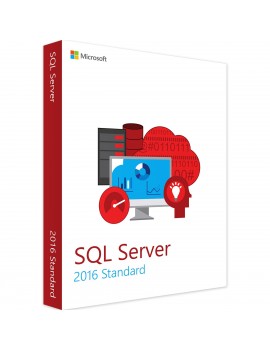Mastering the Modern Data Platform: SQL Server 2019 Best Practices

In the era of big data and digital transformation, organizations rely on robust data platforms to manage, analyze, and derive insights from vast amounts of data. Microsoft SQL Server 2019 stands as a cornerstone of modern data platforms, offering a comprehensive suite of features and capabilities to address the evolving needs of data-driven organizations. To harness the full potential of SQL Server 2019 and build a resilient and efficient data platform, organizations must adhere to best practices that optimize performance, scalability, and security. In this article, we’ll explore key best practices for mastering the modern data platform with sql server 2019.
Comprehensive Data Governance
Effective data governance is essential for ensuring data quality, integrity, and compliance within an organization. SQL Server 2019 provides robust data governance capabilities, including features like Data Discovery and Classification, Transparent Data Encryption (TDE), and Dynamic Data Masking. By classifying and encrypting sensitive data, organizations can mitigate security risks and ensure compliance with regulatory requirements such as GDPR and HIPAA. Implementing comprehensive data governance practices helps organizations maintain trust in their data and support informed decision-making across the organization.
Performance Optimization
Optimizing database performance is critical for delivering responsive and efficient data-driven applications. SQL Server 2019 offers various features and techniques to optimize performance, including intelligent query processing, indexing strategies, and resource management. Organizations should leverage tools like the Query Store and Execution Plan Analyzer to identify and address performance bottlenecks proactively. Additionally, optimizing hardware resources, such as CPU, memory, and storage, can further enhance database performance and scalability. By continuously monitoring and optimizing performance, organizations can ensure that their SQL Server 2019 deployments meet the demands of modern data workloads.
High Availability and Disaster Recovery
Ensuring high availability and disaster recovery is essential for maintaining business continuity and minimizing downtime in the event of hardware failures or system outages. SQL Server 2019 offers features like Always On Availability Groups and Database Mirroring, which provide data redundancy and failover capabilities to enhance availability and resilience. Organizations should implement a comprehensive high availability and disaster recovery strategy that includes regular backups, replication, and automated failover to minimize the impact of disruptions and ensure continuous access to critical data and applications.
Security Hardening
Securing sensitive data and protecting against cyber threats is paramount in today’s digital landscape. SQL Server 2019 offers robust security features, such as Always Encrypted, Row-Level Security, and Auditing, to help organizations safeguard their data assets and comply with regulatory requirements. Organizations should implement security best practices, such as least privilege access, strong authentication, and regular security audits, to mitigate security risks and prevent unauthorized access to data. Additionally, staying informed about emerging security threats and applying patches and updates promptly can help organizations stay ahead of potential security vulnerabilities.
Scalability and Elasticity
As data volumes continue to grow exponentially, scalability and elasticity become critical considerations for modern data platforms. SQL Server 2019 offers features like Intelligent Query Processing, In-Memory OLTP, and PolyBase, which enable organizations to scale their databases and applications horizontally and vertically to accommodate growing workloads. Organizations should leverage cloud-based deployment options, such as SQL Database Managed Instance and Azure SQL Database, to achieve elastic scalability and cost-effective resource utilization. By designing scalable and flexible architectures, organizations can adapt to changing business requirements and ensure that their SQL Server 2019 deployments remain performant and responsive.
Conclusion
Mastering the modern data platform with SQL Server 2019 requires adherence to best practices that optimize performance, scalability, security, and availability. By implementing comprehensive data governance, performance optimization, high availability and disaster recovery, security hardening, and scalability and elasticity strategies, organizations can build resilient and efficient data platforms that support their evolving business needs. SQL Server 2019 provides a powerful foundation for modern data management and analytics, empowering organizations to derive actionable insights and drive innovation in today’s data-driven world. By following best practices and leveraging the capabilities of SQL Server 2019, organizations can unlock the full potential of their data assets and achieve business success in the digital age.
